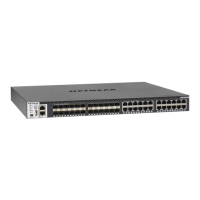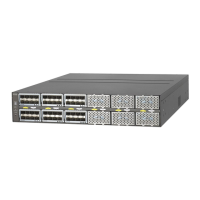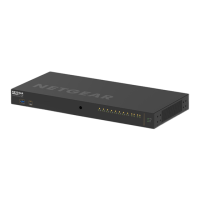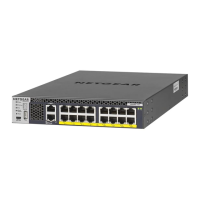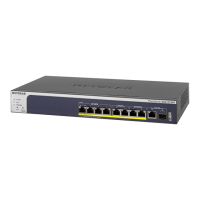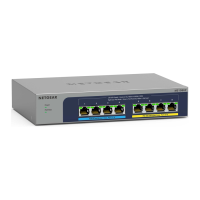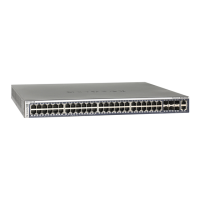Configure Switching Information
201
M4100 Series Managed Switch
When the LAG is enabled, it does not transmit or process received LACPDUs, for
example, the member ports do not transmit LACPDUs and all the LACPDUs it can
receive are dropped. The factory default is Disable.
15. Use Hash Mode to select the load-balancing mode used on a port channel (LAG).
Traffic is balanced on a port channel (LAG) by selecting one of the links in the channel
over which to transmit specific packets. The link is selected by creating a binary pattern
from selected fields in a packet, and associating that pattern with a particular link:
• Src MAC, VLAN ,EType , incoming port. Source MAC, VLAN, EtherType, and
incoming port associated with the packet.
• Dest MAC, VLAN, EType, incoming port. Destination MAC, VLAN, EtherType, and
incoming port associated with the packet.
• Src/Dest MAC, VLAN, EType, incoming port. Source/Destination MAC, VLAN,
EtherType, and incoming port associated with the packet.
• Src IP and Src TCP/UDP Port. Source IP and Source TCP/UDP fields of the packet.
• Dest IP and Dest TCP/UDP Port. Destination IP and Destination TCP/UDP Port fields
of the packet.
• Src/Dest IP and TCP/UDP Port. Source/Destination IP and source/destination
TCP/UDP Port fields of the packet.
• Enhanced Hashing mode. Features MODULO-N operation based on the number of
ports in the LAG, non-unicast traffic and unicast traffic hashing using a common hash
algorithm, excellent load balancing performance, and packet attributes selection
based on the packet type:
- For L2 packets, source and destination MAC address are used for hash
computation.
- For L3 packets, source IP, destination IP address, TCP/UDP ports are used.
16. Use the Port Selection Table to select the ports as members of the LAG.
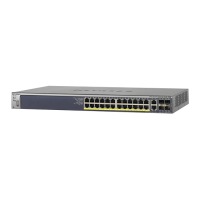
